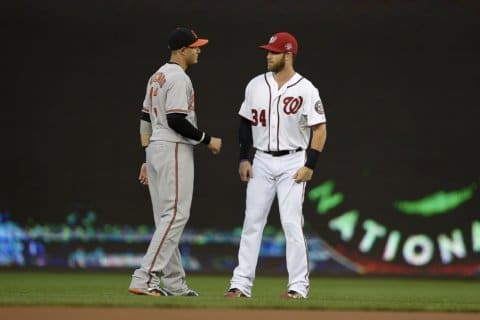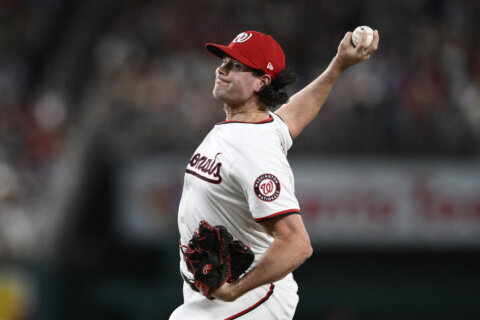WASHINGTON — So, we’re all still here, waiting.
The MLB free agent bonanza that was supposed to make history this winter with unprecedented, blockbuster deals has instead made a much different kind of history as the market for Bryce Harper and Manny Machado has seemingly vanished into thin air. Two generational talents hitting free agency earlier than nearly any other player, with more years of their primes ahead of them, have become victims of market forces far greater than themselves.
But these two will be playing Major League Baseball somewhere this year. So what’s an offer that might make sense for all sides?
Every year, MLB Trade Rumors puts out their predictions on where the top free agents will land, and the length and cost of their contracts. The guesses are often very close to the actual market. This year, MLBTR had Patrick Corbin at six years, $129 million (to the Yankees), which was not far from his actual six-year, $140 million contract with deferrals from the Nats. They pegged Nathan Eovaldi to return to the Red Sox on a four-year deal worth $60 million (he got 4/$67.5 million). If anything, they’ve slightly underestimated the market on these players.
Here’s what they predicted for Harper and Machado:
- Harper: Los Angeles Dodgers, 14 years, $420 million
- Machado: Philadelphia Phillies, 13 years $390 million
These numbers look somewhere between improbable and hallucinogen-inspired right now. It’s easy to see either player commanding $30 million per season — Mike Trout will make more than $34 million in 2019, Zack Greinke $34.5 million — but that kind of duration of fully guaranteed money seems entirely out of the question.
Whether there is a soft collusion taking place among owners or whether everyone has independently decided that net profits are more important than winning, the culture has shifted to a place where such a contract is seen as a liability, regardless of the quality of player.
But you’re here for the offer. So here it is, for either player: 5 years, $200 million, with opt-outs after years two and three.
Obviously in baseball, all money is guaranteed, and a $350 or $400 million guarantee is, in a vacuum, clearly more valuable. But $200 million is still a your-grandchildren-are-set-for-life kind of contract. It would be the ninth-largest in total value in MLB history.
More to the point, it’s a $40 million annual average value, instantly elevating the recipient to the coveted status of “highest-paid player in the game.” With the free agent market trending in dark, nebulous directions, it provides stability through a turbulent period and a potential 2021/2022 labor unrest, but also the opportunity to bail early — at age 28 or 29 — if those conditions improve before then, still younger than most free agents hitting the market for the first time. If they stay for the duration, they still become free agents at age 31 with a chance for another long-term deal.
The benefits for teams here should be pretty obvious. The total value commitment is much less prohibitive, as is the impact on future payrolls. The luxury tax threshold is set to continue to rise and, as anyone with a basic understanding of baseball’s ever-increasing profits knows, any team can afford this price. On a shorter deal, maybe a better fit emerges.
The market has not really shaped up in the way anybody seemed to expect, at least so far, less than three weeks from pitchers and catchers reporting to Spring Training. Unless something drastically changes, the players and their agents are likely to have to make a gamble on how they think the market will change and potentially benefit or hurt their value in the future.
At this point, there’s no good reason to think the market will improve in the next couple of offseasons until the new collective bargaining agreement can get ironed out. A deal like this elevates the top free agents to the top salaries in the game, but leaves the door open on both sides to pursue something better at multiple stages down the road. Barring a mystery team crashing through the wall at the eleventh hour with a Brinks truck and a deal that stretches to 2030, this structure might be more practical for all involved.







